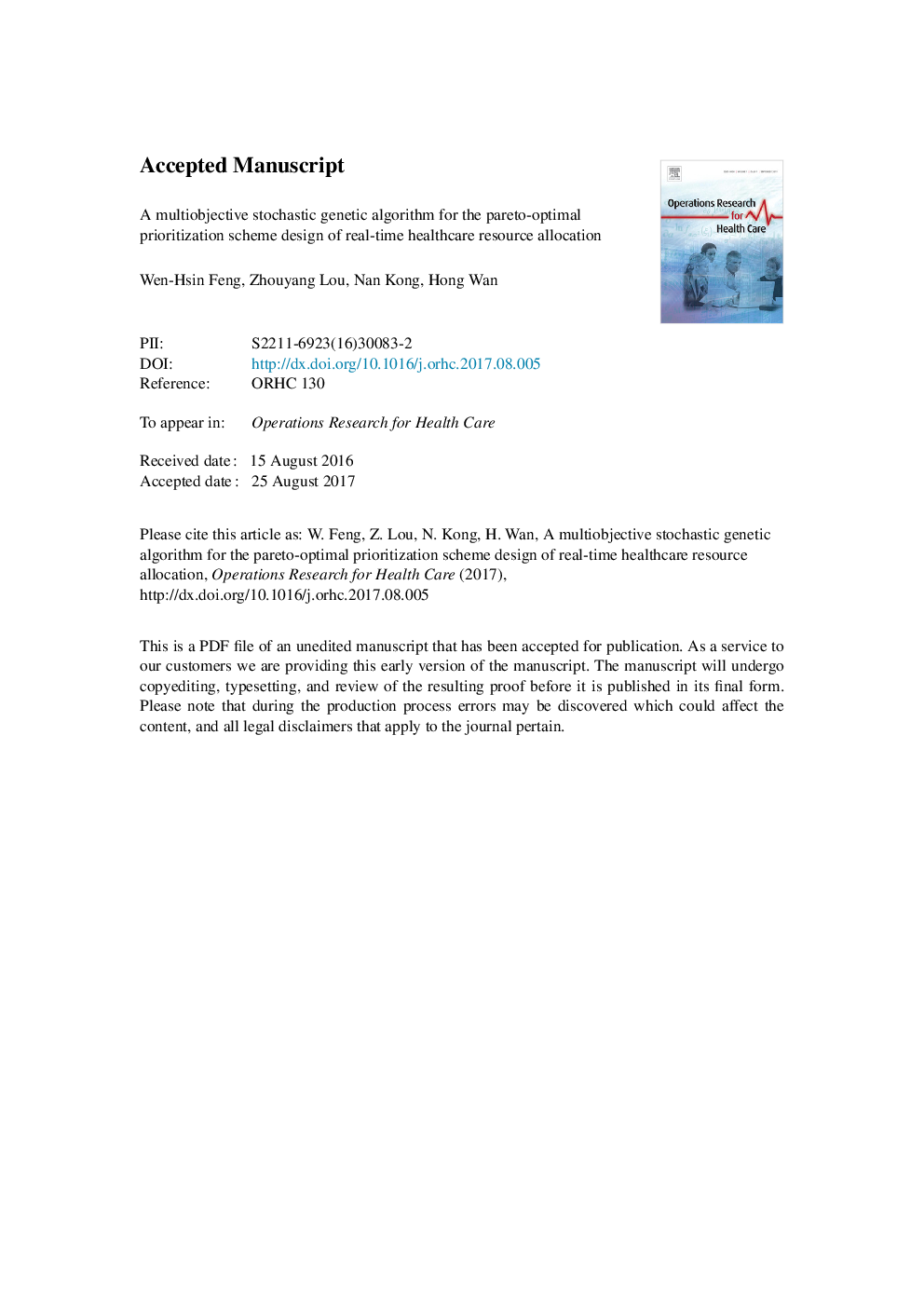| Article ID | Journal | Published Year | Pages | File Type |
|---|---|---|---|---|
| 7543575 | Operations Research for Health Care | 2017 | 34 Pages |
Abstract
Many critical or even life-saving healthcare resources such as cadaveric donor organs are scarce. Upon procurement of such resources, some priority rule is applied to make the allocation decisions. In this paper, we consider the problem of optimally designing a single-score based priority rule to rank patients for each unit of available resource in real-time. We address the cases where multiple potentially conflicting objectives are simultaneously considered and the optimality principles on these objectives are in the expectation sense. We thus propose a multiobjective stochastic genetic algorithm approach to obtain Pareto-optimal policies, i.e., determining the weights placed on different prioritization criteria. To accommodate the stochastic nature, we adapt a ranking-and-selection procedure to construct an elite chromosome set in each generation of the genetic algorithm, and use the elite chromosome set to improve the offspring generation. To ensure sufficient diversity in the population, we apply clustering to identify representative elite chromosomes. We use cadaveric liver allocation policy optimization as a proof-of-the-concept study, for which we consider both pre-transplant and post-transplant survival rates as the objectives. We incorporate a self-developed discrete-event simulation model into our optimization algorithm framework. To tune the algorithm parameters efficiently, we use a response-surface-based surrogate model to evaluate each candidate solution. We then obtain a set of Pareto-optimal solutions based on the simulation evaluations. Our study justifies the viability of the approach, i.e., efficiently developing good single-score based priority rules with respect to multiple system outcomes.
Related Topics
Health Sciences
Medicine and Dentistry
Public Health and Health Policy
Authors
Wen-Hsin Feng, Zhouyang Lou, Nan Kong, Hong Wan,
